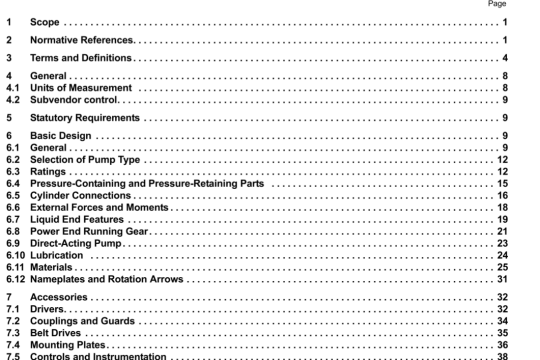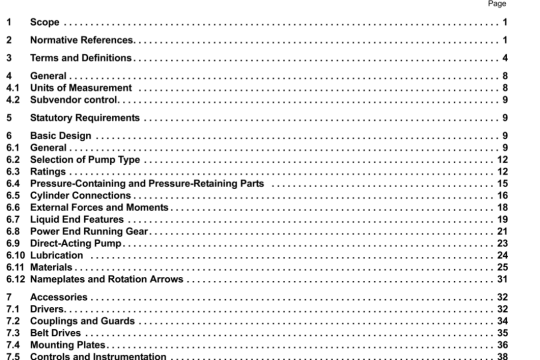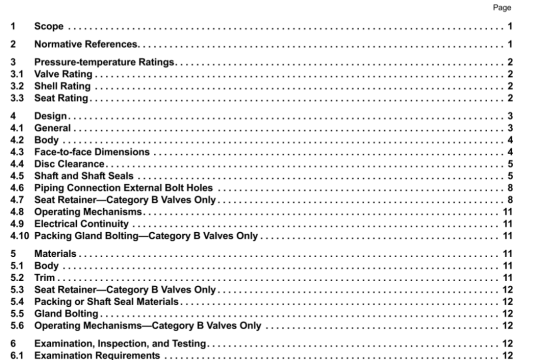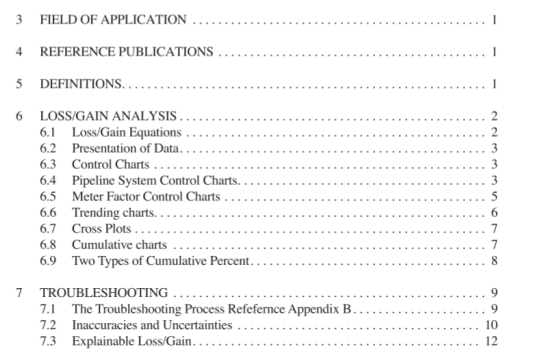API RP 934-C:2008 pdf download
API RP 934-C:2008 pdf download.Materials and Fabrication of 11/4cr-1/2Mo Steel Heavy Wall
Pressure Vessels for High-pressure Hydrogen Service Operating at or Below 825 °F(441°c).
6.1.3 Low hydrogen welding consumables, including fluxes, having a maximum of B ml of diffusible hydrogen for every 100 g of weld metal. 1-48 per AWS A4.3, should be used. They should be baked, stored, and used in accordance with manufacturer’s instructions (holding in electrode oven, length of time out of oven, etc).
6.2 MechanIcal Requirements
6.2.1 Tensile Properties
The tensile properties of the deposited weld metal should meet those of the base metal in accordance with 5.5.2.
6.2.2 Impact Properties
Prior to the start of fabrication, cacti lot of electrodes, heat of filler wire, and combination of lot of flux and heat of wire, should be screened by impact testing of weld deposit in accordance with 5,5.3.
7 Welding, Heat Treatment, and Production Testing
7.1 General Welding Requirements
7.1.1 Base metal surfaces prior to welding or applying weld overlay should consist of clean metal, prepared by machining, grinding, or blast cleaning.
7.1.2 All welded joints including non-pressure attachments to the vessel body should:
a) have full penetration joint design;
b) be located so that ui ultrasonic examination of welds can be made after fabrication and after installation is complete (in cases where this is not practical, the manufacturer should propose alternate NDE methods to verify weld quality), and;
C) be made sufficiently smooth to facilitate NDE (MT. PT, UT, or RT), as applicable.
7.1.3 All welding should be completed prior to final PWKT except welding of internal attachments to the corrosion resistant weld overlay or cladding. For these attachment welds, a WPOT or mockup test should be performed to verify that this does not produce a HAZ in the base metal unless waived by the purchaser.
7.1.4 All weld repairs to base metal, weld joints and weld overlay should be performed using a repair welding procedure qualified in accordance with 7.2, and should meet all the same requirements as the normal fabrication welds.
The purpose of DHT is to drive out hydrogen to minimize the risk of hydrogen cracking, and to minimize problems due
to low as-welded toughness.
7.4 ProductIon Testing of Base Metal Welds
7.4.1 Chemical Composition of Production Welds
7.4.1.1 The chemical cxxnposition of the weld deposit representing each different welding procedure should be checked by either laboratory chemical analysis or by using a portable analyzer of suitable accuracy and precision.
7.4.1.2 The chromium and molybdenum content & the weld deposits should be within the ranges specified in ASME BPVC. Section II, Part C for the specified electrodes.
7.4.2 Hardness of Weld Deposit and Adjacent Base Metal
7.4.2.1 After final PWHT (see 7.6) hardness determinations should be made for each pressure-retaining weld (includiig each nozzle and attachment welds) using a portable hardness tester,
7.4.2.2 Each hardness test result should be the average of three impressions at each test location. The test locations should include weld metal and base metals adgacent to the fusion line on both sides. All individual hardness values should be reported.
7.4.2.3 Hardness values should not exceed 225 HBW.
7.42.4 Hardness tests should be performed on each 10 ft (3 m) length of weld, or fraction thereof. This testing should be performed on the side exposed to the process environment when accessible.
7.4.3 Weld Impact Tests
Production test plates subjected to the min’mtm’i and maximum PWHT should be tested and should meet the requirements of 5.5.3.
7.5 Weld Overlay or Integral Clad
Both austenitic stainless steel and ferritic stainless steel may be used for integral cladding of steel. However, austenitic stainless steel is typically used for the corrosion resistant weld overlay, which also applies to clad restoration welding. The following special requirements should apply for the austenitic stainless steel overlay.
7.5.1 Material Requirements
The ferrite content of austenitic stainless steel weld overlay should be between 3 FN and 10 FN. as determined in accordance with WRC Bulletin 342. prior to any PWHT.
7.5.2 Dlsbondlng Tests
Experience indicates that the risk of disbonding is low at the thicknesses and hydrogen charging levels at which 1 1I4Cr-tl2Mo is used. If testing is considered. API 934-A can be used as a resource document. The purchaser should define testing requirements and acceptance criteria.




